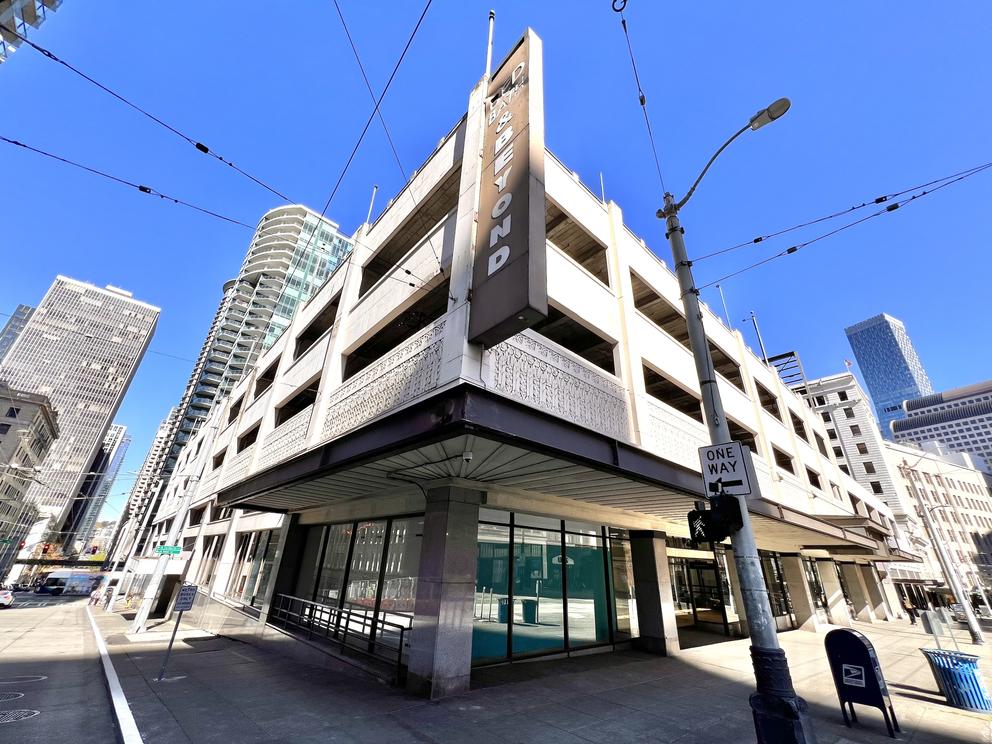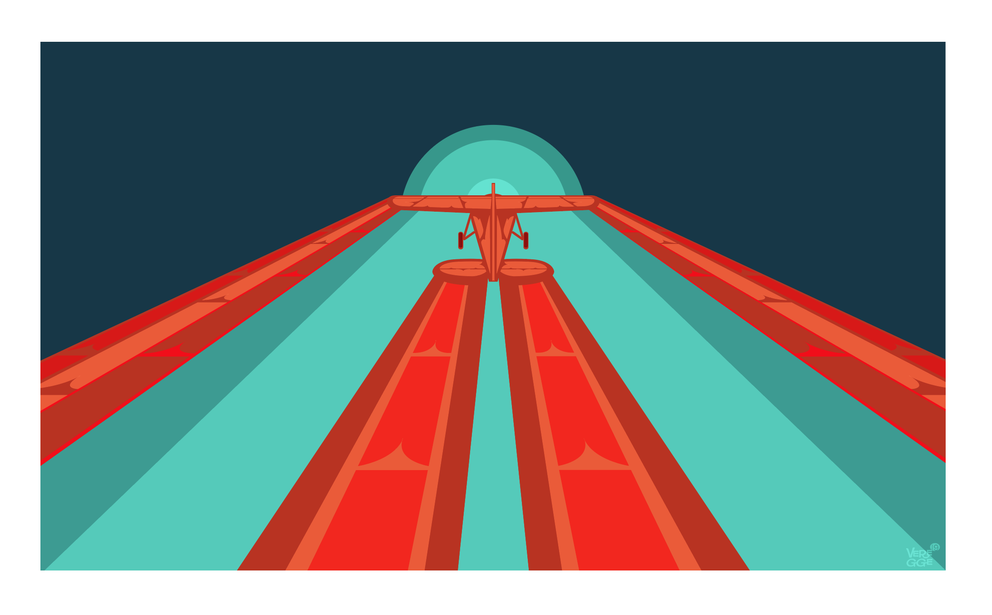At least for this location, what’s “beyond” has been clarified. The long-vacant 66,000-square-foot space — a 1960 building that looks like it’s being trampled by its own parking garage — is becoming a new arts and performance space called Cannonball Arts.
The effort is led by local production company New Rising Sun, the group that brought Bumbershoot back to life last year with the aim of returning the festival to its funkier, artsier origins.
Creative director Greg Lundgren has a long history of giving artful new life to Seattle’s abandoned spaces, including Vital 5 Gallery (in a former car dealership), Out of Sight exhibits at the (pre-renovation) King Street Station, and the (now closed) Museum of Museums in an unused Swedish Medical Center facility.
This time it’s a dormant department store that will come alive with installations, videos, concerts, dance, contemporary Native art and emerging technology. Created in partnership with the Muckleshoot Indian Tribe and set to open in spring 2025 — after a makeover by SHED Architecture — the new arts center will bring the creative energy of Bumbershoot to a year-round, downtown setting.
Meanwhile, the lineup for this year’s Bumbershoot (again curated by New Rising Sun; Aug. 31 - Sept. 1) is starting to emerge. In addition to plenty of live music, expect an Out of Sight contemporary art exhibit, free-range dance performances across the festival grounds, the Bumbermania! wrestling show (hilarious, and one of my faves from last year), a deep-fake BigFoot competition and the return of the insanely popular Cat Circus.
We’re coming up on Earth Day (April 22), and nothing says earth like clay. The malleability of humanity’s earliest medium is well represented by several shows currently on view in Seattle.
< London-based artist Claire Partington is showing her exquisite and curious ceramic figures in The Limerents at Winston Wachter Gallery (April 25 - June 12). Blending Greek myths and pop culture, these finely wrought glazed earthenware pieces offer an amusing take on all-consuming obsession. See: Adonis, sporting Nikes and gold shin guards while staring into his gold phone; and Daphne, turning into a tree while decked out in gold hoops and yoga duds.
< On the other end of the ceramic spectrum, head to the Frye Art Museum for extra-large and gloriously lumpy sculptures by Jessica Jackson Hutchins in Wrecked and Righteous (through May 5). The Portland artist creates large assemblages of glazed clay clomped onto household objects (such as chairs and couches). The result feels both funny and hefty — giving a visceral sense of what it’s like to be an unwieldy human moving about in the world.
< At Wa Na Wari, Nigeria-based Cameroonian artist Djakou Kassi Nathalie will present several of her meticulously carved clay sculptures as part of a new group show (April 27 - July 20). The clothes — and sometimes hair — of these compelling figures consist of thickly textured and intricately cut mask shapes that contrast strikingly with the subjects’ smooth skin. Both familiar and often deliberately out of scale, they beckon you to look closer.
< For extra credit: Head to new downtown Mount Vernon gallery Leonard Brothers Fine Art, where the Tulip Time Invitational (through April 27) pays tribute to the annual flower festival with a cheeky array of clay. (Side note: The tulips are in peak bloom right now and I can attest they are totally worth a visit.) Curated by Shoreline ceramics gallery Modern Glaze, the group show features appealingly abstract vessels, tantalizing towers and a pair of fantastic flexed feet — all the better for tiptoeing through the you-know-whats.
The Northwest lost an artist of unique vision last week: muralist and Marvel comic cover artist Jeffrey Veregge. He died of a heart attack on April 12, after a long struggle with complications due to lupus. He was 50.
A member of the Port Gamble S’Klallam Tribe, Veregge developed his signature style by blending traditional Coast Salish formline techniques with his own love of pop culture, space exploration and comic book heroes. He dubbed his unmistakable look “Salish Geek.”
“People have an idea of what Native art is and what Salish art is,” Veregge told Crosscut in May 2020. “I want people to see that it can be contemporary in a way that still honors the intention of the form and the storytelling, but in a way that is new and unexpected.”
Unexpectedness is the charm of Veregge’s work, in which he portrayed Star Wars, Batman, the Seattle Seahawks and NASA missions with Salish flair and a midcentury modern sheen.
You can find his exuberant “Reaching for Space” design on T-shirts at the Space Needle gift shop, peruse his space-age prints at Stonington Gallery, see his superhero work for Marvel comics, and check out one of his large murals in the staircase leading to the underground parking lot at Climate Pledge Arena.
Installed in 2021, the latter piece tells the story of our region in chronological layers, from the past to the future, bottom upward: Indigenous canoers and longhouses make way for settler homes, and above those, robot birds fly among tall trees rooted in history.
Veregge’s most recent installation adorns the new Tapestry apartment complex at 12th and Yesler, where his exterior design feature is visible from the street. He based the cascading metal “waterfall” on Salish basket-weaving patterns, and incorporated sleek formline bluebirds, which he said were flying upward to carry hope to the heavens.
Get the latest in local arts and culture
This weekly newsletter brings arts news and cultural events straight to your inbox.





